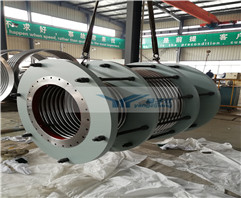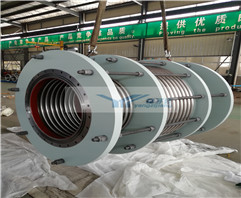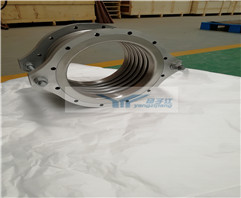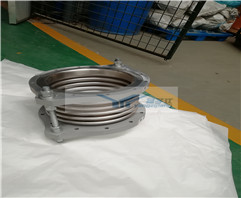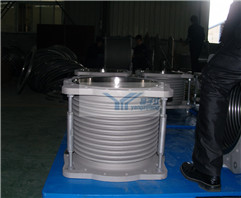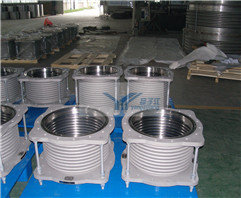The metal bellows used in GIS is used as the connecting component between two adjacent equipment shells in GIS engineering, and can be divided into two categories according to their uses: adjustment bellows and temperature compensation bellows.
1. Adjustable bellows
Adjustable bellows, also known as detachable bellows, are mainly composed of bellows for size adjustment and internal detachable conductors. Adjustable bellows has two functions: one is to solve the difficult installation problem caused by absorbing the machining dimensional tolerance and installation error of the parts. During installation, the bolts on the double-ended screw connecting the flanges on both sides of the bellows can be loosened, the length of the bellows can be adjusted within the dimensions specified in the drawings, and the nuts can be locked after installation; the other is when the equipment needs to be repaired. , Due to the compact structure of the GIS and the small operating space, the adjustable bellows installed on both sides of the equipment can be used at this time to compress the bellows first, remove the inner detachable conductor, and remove the equipment to be repaired. The detachable bellows makes the GIS layout more convenient and flexible.
2. Temperature compensated bellows
Temperature-compensated bellows are also called thermal expansion bellows. The temperature-compensated bellows can not only absorb machining dimensional tolerances, installation errors, and facilitate disassembly during maintenance, but also absorb the deformation of the shell due to the large displacement caused by thermal expansion and contraction, and absorb the smaller deformation caused by earthquake and foundation settlement. Subsidence. The more commonly used temperature compensation bellows in GIS engineering are: thermal expansion rod bellows and pressure equalization bellows.
(1) Thermal expansion rod type bellows
The thermal expansion rod type bellows is composed of stainless steel bellows and thermal expansion rods and other components. During product transportation and on-site pressure resistance and installation, the nuts on the double-ended screws connecting the flanges on both sides of the bellows are in a fastened state. During normal operation, loosening the nut to the required adjustment clearance will not limit the axial deformation of the bellows. The bellows and the thermal expansion rods can absorb thermal expansion without causing the gas internal pressure to act on the flanges on both sides. The gas internal pressure is absorbed by the thermal expansion rods, and the support strength on both sides of the bellows is relatively low.
(2) Pressure-balanced bellows
The pressure equalization bellows consists of 4 metal flanges, 2 working bellows, 1 equalization bellows and a balanced tie rod. The metal flange and the bellows are welded together, and the balanced tie rod passes through the tie rod on the flange. The holes are fixed on the 3 flanges by nuts. When the pressure-balanced bellows is transported, the nut on the bellows rod is in a locked state. When installing on site, loosen the nut to adjust the length of the bellows. After installation and debugging, adjust the expansion and contraction to the running state. Pressure-balanced bellows are generally used in equipment above 550kV and higher off the ground, and the price is also relatively expensive.

 简体中文
简体中文
